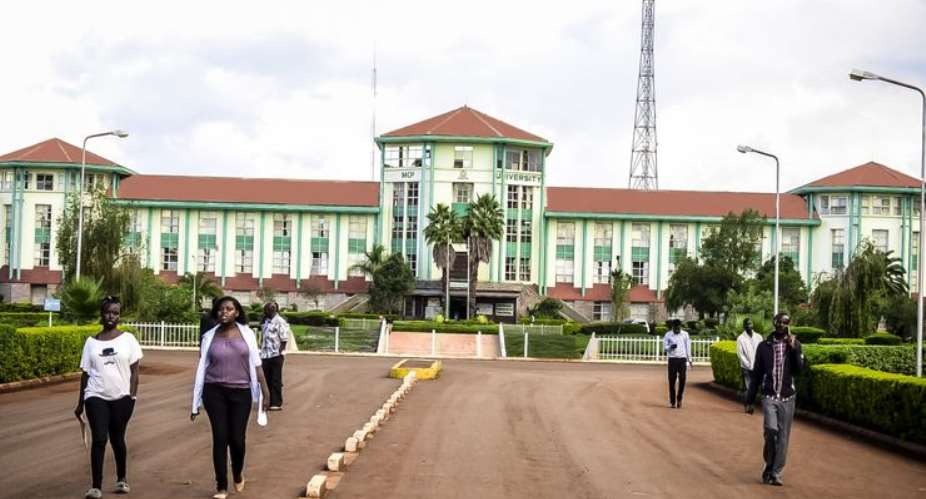Kenya adopted a new approach to public university funding beginning with the 2023-24 academic year. Rapid student enrolment growth and declining state revenues have triggered the need for the reforms, which will require students to meet a higher proportion of costs. Ishmael Munene, who has a scholarly interest in African higher education, examines the background to these reforms.
What are the specific reforms?
The new model has yet to be fully implemented. Under reforms announced in May 2023, there are now two funding avenues for higher education in Kenya.
First is the newly established University Fund, which allocates funding to the country's 69 public universities. Public universities are no longer funded directly by the government. Instead, the University Fund, a public trustee, develops funding criteria and appropriations for institutions, and disburses all funding. The “public trustee” is the board that runs the fund. It channels funds it receives from the government, donors and other sources to the public universities.
The trustees have proposed a four-point framework to decide each university's funding: postgraduate research; national priority; institutional factor (university age); and special needs education.
Second, the existing Higher Education Loans Board will continue to fund individual students, including those in private universities. So the University Fund directs funding to public universities for their operations and capital projects. And the loans board will fund university students directly to meet their tuition and living expenses.
Means testing will determine the level of financial support, which will be a mix of government scholarships, loans and household contributions. The categories are:
vulnerable (82% scholarship, 18% loan)
extremely needy (70% scholarship, 30% loan)
needy (53% scholarship, 40% loan, and 7% family contribution)
less needy (38% scholarship, 55% loan, 7% family contribution).
In years to come, scholars and policy analysts will evaluate the effectiveness of these changes in meeting its three stated goals. These are: providing students with adequate financial support; promoting the provision of quality higher education; and ensuring all students are equitably and adequately supported based on their financial needs.
What is the Kenya government trying to fix?
The recent reforms in higher education financing in Kenya are a response to the funding crises that have plagued the sector since 2010. Before the current reforms, public universities' total debt to pension funds, tax authorities and general contractors surpassed US$110 million, negatively affecting their operations. Government support continued to decline. In the 2019–2020 financial year, for instance, state funding was slashed by 5.4%, adding to the universities' financial woes.
The crises can be traced back to a externally driven university funding overhaul in the mid-1990s. Neoliberal tenets were at the heart of these reforms, not just in Kenya but in other African countries too. The core elements included privatisation of universities, use of business models to raise most of the revenue for public universities, and restricting government's role to policy, regulation and quality control.
While the state universities became largely privately funded institutions, government support remained under a cost-sharing model. Students were required to pay a highly subsidised, modest tuition fee of US$106 per year. There was a bursary scheme for those unable to pay.
But at the same time state universities were permitted to admit privately sponsored students. These students paid the full cost of their university programmes. At its height in 2011 public university revenues from private sources exceeded government funding.
Universities were also required to engage in entrepreneurial activities to supplement state funding. And private universities were authorised, in a move designed to expand higher education opportunities.
The system ballooned as a result. There were 18 universities in 2000 (six public, 12 private), 60 in 2010 (22 public, 38 private), and 69 in 2023 (39 public, 30 private). In terms of enrolment, there were 45,412 students (38,413 public, 6,999 private) in 2000 and 182,253 in 2010 (150,926 public, 31,327 private). The current enrolment stands at 563,000 (426,965 public, 85,946 private).
On the flip side, the policies had undesirable consequences. Entrepreneurial activities didn't produce sustainable revenue growth. And growth in privately sponsored students didn't keep up. Public universities were left in financial distress.
Quality became a concern. Overcrowding in libraries, laboratories and classrooms defined the teaching environment and facilities were poorly maintained.
To safeguard quality, in 2015 the state ordered the closure of some satellite campuses at public universities. It also imposed a moratorium on new campuses. The state also merged the parallel classes of government-sponsored and privately sponsored students.
Will the reforms work?
These reforms invite serious apprehension. They are silent on strengthening government funding to meet the needs of public universities, which is the major source of their current financial challenges.
Confusion and frustration plagued the launch of this student financing approach. Besides technical glitches in accessing the system, challenges include unclear guidelines on registration fees, accommodation, catering, access to books and medical cover.
Categorising students by need will be a challenge. Most households struggle to make a living and work in the informal sector, where income may not be easy to capture.
The other challenge relates to student funding based on course taken. Funding based on a fixed programme cost fails to recognise that the cost of offering a programme could differ on account of institutional location. Private universities in the same location can have different pricing models for similar programmes. Indeed, the issue of government-sponsored students enrolling in private universities is not adequately addressed.
What needs to be done?
The current reforms signal the failure of the marketplace model as an alternative to state funding of universities.
But the reforms fail to address important issues related to the sustainability of higher education funding. These include funding strategies for universities' capital projects, policies balancing commercial interests and educational goals, the uncoordinated expansion of universities, and a weak regulatory framework to monitor and address quality.
Targeting student equity and price discrimination to reflect programme costs is insufficient to address university funding challenges created by neoliberalism. The solution lies in reforms that would also address government funding, institutional budget and staff rationalisation, sustainable system-wide expansion, quality control, and the range of private resources.
Ishmael Munene does not work for, consult, own shares in or receive funding from any company or organisation that would benefit from this article, and has disclosed no relevant affiliations beyond their academic appointment.
By Ishmael Munene, Professor of Research, Foundations & Higher Education, Northern Arizona University





 List of 24 ministerial nominees approved by Parliament
List of 24 ministerial nominees approved by Parliament
 You were my inspiration, made me who I am today – Lilian Kumah
You were my inspiration, made me who I am today – Lilian Kumah
 Rainstorm destroys Hohoe E.P. Senior High School building
Rainstorm destroys Hohoe E.P. Senior High School building
 John Kumah strongly supported me to become NPP flagbearer – Bawumia reveals
John Kumah strongly supported me to become NPP flagbearer – Bawumia reveals
 Late John Kumah urged me to run for NPP flagbearer, strongly supported me — Bawu...
Late John Kumah urged me to run for NPP flagbearer, strongly supported me — Bawu...
 Akufo-Addo appoints Joseph Kpemka as Deputy MD of BOST
Akufo-Addo appoints Joseph Kpemka as Deputy MD of BOST
 Ablakwa petitions CHRAJ to investigate sale of SSNIT's hotels to Rock City Hotel
Ablakwa petitions CHRAJ to investigate sale of SSNIT's hotels to Rock City Hotel
 MoF to provide new bailout for defunct Gold Coast Fund investors – Bawumia revea...
MoF to provide new bailout for defunct Gold Coast Fund investors – Bawumia revea...
 OMCs implement price adjustments despite International petroleum price declines
OMCs implement price adjustments despite International petroleum price declines
 Petition to remove Kissi Agyebeng will disrupt operations of OSP – Martin Kpebu
Petition to remove Kissi Agyebeng will disrupt operations of OSP – Martin Kpebu
